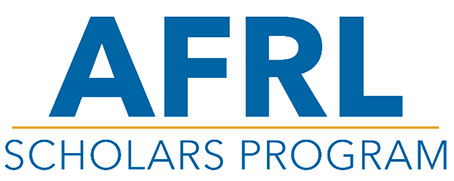Optical Signatures of Ion-Neutral Collisions
Overview
What will you do?
Qualifications
Organization
Overview
The normal operation of electric propulsion devices results in the generation of atomic and molecular ions of various charge, often with significant velocities. These expelled ions can collide with other atomic and molecular components (e.g. Earth's atmosphere, un-ionized propellant) and impart a significant amount of internal energy into the collision partners. This internal energy can be rotational, vibrational and/or electronic and often leads to emission of photons at specific wavelengths. These specific wavelengths occur because of the unique energy levels of the collision partners. While the thruster environment can be relatively complicated, these collisions can be generated in the laboratory under controlled conditions such that quantitative determination of the populations in the various energy levels can be determined. These populations can lead to specific optical signatures that can be used for thruster diagnostics and safety-of-flight purposes.
Organization: Scholars
working and learning something new every day
Benjamin Douglas Prince
Postdoc

Benjamin Douglas Prince
We use experimental and theoretical tools to examine a broad range of hyperthermal processes including 1) interactions between atmospheric species and surfaces, 2) chemical and electric thruster plumes with atmospheric species, 3) interactions occurring in the plumes of next-generation propulsion technologies and 4) fundamental ion-neutral collision processes. Typical experimental techniques include guided-ion beam tandem mass spectrometry, quadrupole and time-of-flight mass spectrometry, optical emission spectroscopy/spectrometry, laser-induced fluorescence detection and measurement of ion conversion efficiency for atmospheric sensors. The laboratory houses 5 different high vacuum experimental systems and has access to high-performance computing resources for theoretical treatment of experimental results. Areas of current particular interest are experimentation relevant to the re-entry vehicle environment where electronic, vibrational and rotational excited states are common and experimental data is sparse, development and understanding of the microphysics associated with ionic liquid propelled electrospray thruster technology, quantification of processes leading to thruster signatures of in-space propulsion systems, and fundamental charge-exchange physics with an emphasis on quantification of scattering angles, energy transfer, and branching ratios.
What will you be doing?
In this task, the interested student will perform modelling and simulation of the collision systems using custom research and development codes developed in previous years to predict optical signatures resulting from the collisions. The student will compare the theoretical results to experimental measurements and assess the predictive quality of the models. This effort will also be paired to an experimental effort of the same name in the Space Scholars Program.
Qualifications and Eligibility
Below is a summary of the desired background for the position, and any general requirements. Additional detail may be found in the application.
About the partner
Universities Space Research Association (USRA) administers a three-pronged approach to strengthening the science, technology, engineering, and mathematics (STEM) workforce pipeline that includes: the AFRL Scholars Program, AFRL Scholars Professionals, and the University Research and Engagement Program (UREP). This portfolio of enriching programs aligns directly with the Federal STEM Strategy and Department of Defense (DoD) STEM mission for the U.S. Department of the Air Force by offering immersive project-based learning opportunities for students and postdoctoral fellows.

Media Inquiries
afrl.pa.inquiry@us.af.milBusiness Inquiries
afsbirsttr-info@us.af.milHigher Education Inquiries
collaborate@us.af.milCopyright © 2025 The Air Force Research Laboratory. All rights reserved.
